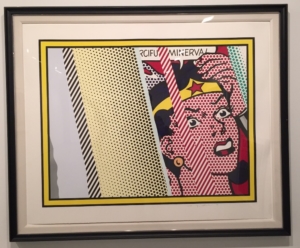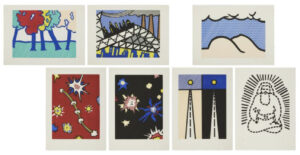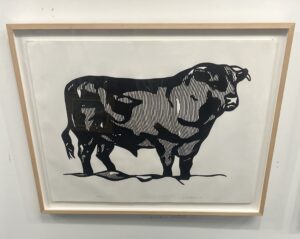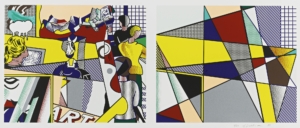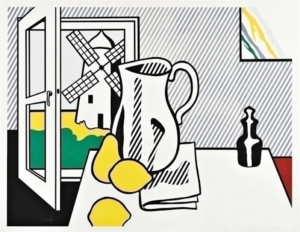Haystack #1, 1969
Signed and dated in pencil, numbered from the edition of 100, published by Gemini G.E.L., Los Angeles, with their blindstamps and ink stamp on the reverse
13 1/4 x 23 1/2 inches (33.7 X 59.7 cm.)
To create a similar listing log in or sign up.
Log in/sign upAll works are inspected prior to delivery, work will be sent out tracked and insured at buyers cost. If you'd like to make specific arrangements or discuss collection then please contact us directly.
Accepted: Wire transfer
ART PLEASE Assurance Policy: Every ART PLEASE seller has been approved by ART PLEASE after a thorough review. All of our sellers are required to accept the following ART PLEASE policy: A buyer may return an item purchased through ART PLEASE, if the item received is not as described in its listing, or is found to be unauthentic.
Roy Lichtenstein, an iconic figure in the Pop Art movement of the 1960s, paid homage to Claude Monet's renowned haystack series through his own interpretation in 1969. Departing from his usual comic strip-inspired motifs, Lichtenstein infused Monet's pastoral subject matter with his signature bold lines and vibrant Ben-Day dots. The result was a striking fusion of classical inspiration and contemporary aesthetics. In Lichtenstein's hands, the humble haystacks were transformed into bold, graphic icons, echoing the mechanical reproduction techniques prevalent in commercial printing and exemplifying his fascination with the intersection of art and mass culture.
The Haystack series not only showcases Lichtenstein's technical mastery but also prompts contemplation on the nature of artistic representation and the evolution of visual culture. By reimagining Monet's pastoral scenes in his poppy style, Lichtenstein invites viewers to reconsider the significance of everyday objects in the modern world. The deliberate juxtaposition of classical subject matter with contemporary techniques challenges traditional notions of artistry and authenticity, while also highlighting the enduring influence of mass media on our perception of the visual world. In this way, the Haystack series stands as a testament to Lichtenstein's innovative spirit and his ability to bridge the gap between past and present, classical and contemporary.



